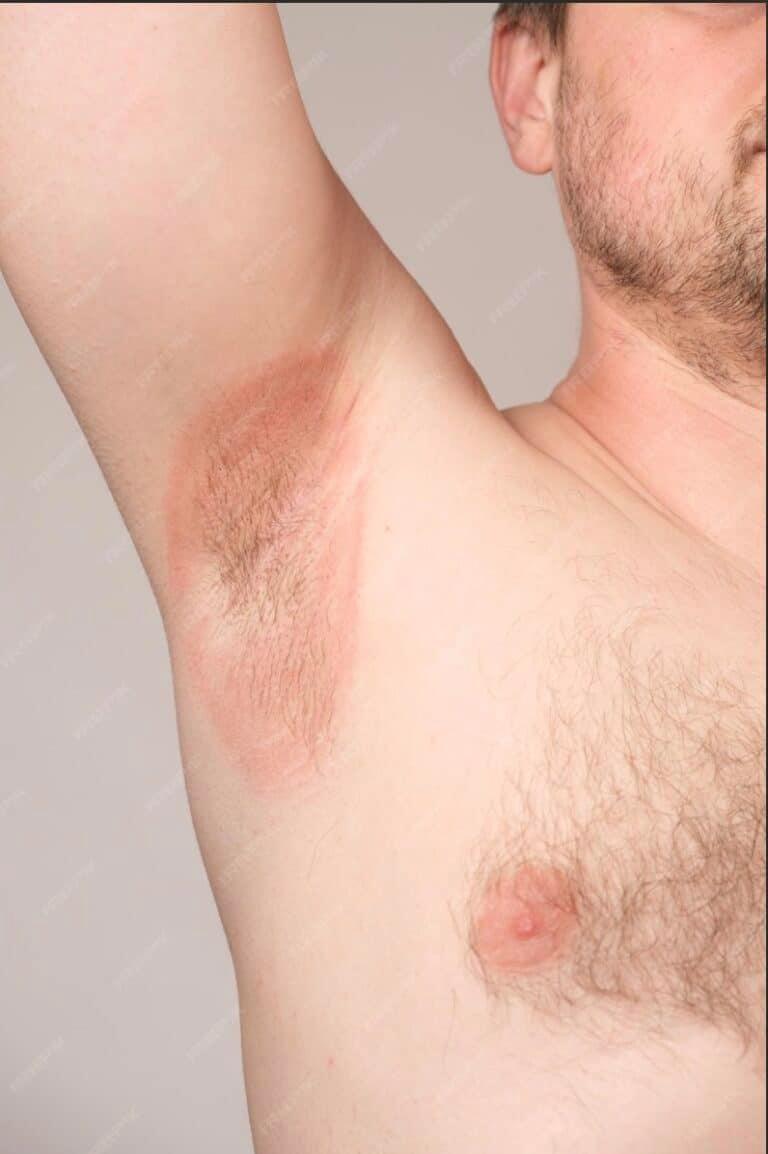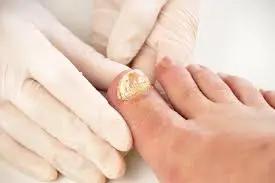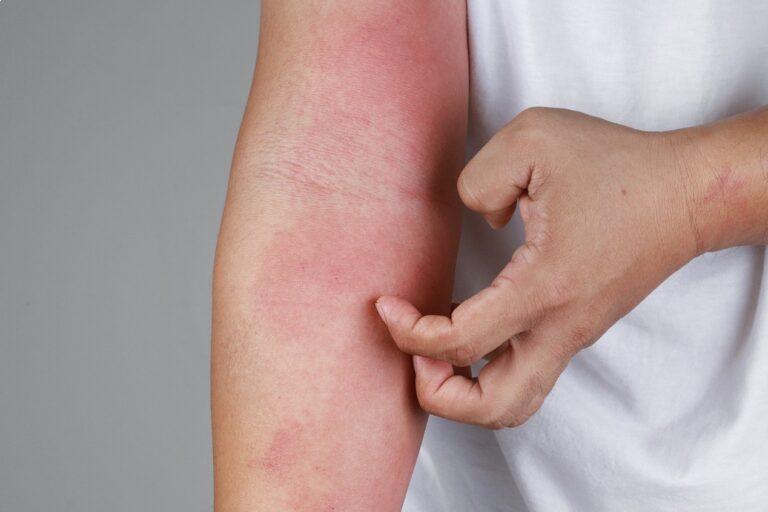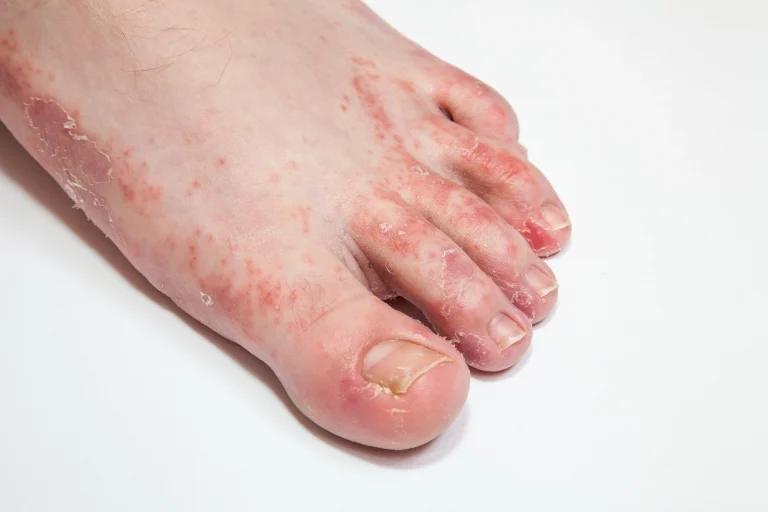Dealing with a persistent rash under the breasts can be an uncomfortable and frustrating experience. Rashes in skin folds (intertrigo), such as under the breast can lead to a fungal infection causing unsightly irritation, itching, and even pain. Fortunately, there are a variety of effective remedies that can help soothe and treat this problem. In this guide, we’ll explore the causes, symptoms, diagnosis, and management of under-breast rash, as well as ways to prevent flare-ups and achieve lasting relief.
Understanding yeast infections under the breasts
A yeast infection under the breasts, medically referred to as candidiasis, is a fungal skin condition caused by an overgrowth of a yeast called Candida. This type of yeast naturally lives on the skin, but when the delicate balance is disrupted, it can lead to a localised infection in the warm, moist areas beneath the breasts. Various factors can contribute to this imbalance, including:
Factors that increase the risk of under-breast rash
- Wearing ill-fitting or restrictive bras
- Failing to change undergarments frequently
- Improper drying of the skin under the breasts
- Excessive sweating or humidity causing a sweat rash
- Pregnancy
- Obesity or being overweight
- Taking antibiotics
- Weakened immune system due to conditions like diabetes
- Autoimmune disorders such as eczema or inverse psoriasis
Identifying the symptoms of under-breast rash
The telltale signs of a yeast infection under the breasts include:
- Bright red, irritated skin rash
- Swollen, tender or shiny skin
- Itchy, burning or stinging skin
- Dry, flaky or scaly cracked skin around the affected area
- Blisters that may ooze or crust over
Diagnosing and confirming the condition
If you suspect you have a yeast infection under your breasts, it’s important to seek medical attention from a healthcare professional. They can perform a thorough examination and, if necessary, collect a skin sample for further testing to confirm the diagnosis.
Physical examination
During the initial consultation, your healthcare provider will visually inspect the affected area to assess the appearance of the rash and determine if it is consistent with a yeast infection. They may gently scrape off a small sample of the skin for further analysis.
Laboratory testing
In some cases a laboratory test may be carried out to identify the specific type of fungus or bacterial infection. This typically involves examining a skin sample under a microscope or conducting a fungal culture to grow and identify the responsible organism.
Treatment options for under-breast rash
Once the diagnosis is confirmed, your healthcare provider will recommend the appropriate treatment plan to address the yeast infection and provide relief. The most common effective treatments are:
Topical antifungal medications
Over-the-counter (OTC) or prescription antifungal creams, ointments, lotions, antiperspirants or powders containing active ingredients like miconazole, nystatin, or clotrimazole are often the first line of defence. These topical treatments work by inhibiting the growth of the Candida fungus, helping to clear the infection and soothe the skin infection.
Oral antifungal medications
Your provider may prescribe an oral antifungal medication, such as fluconazole, in more severe or persistent cases. These systemic treatments can help address the underlying fungal overgrowth from within, complementing the topical approach.
Steroid creams
In addition to antifungal therapies, your healthcare provider may recommend a mild steroid like hydrocortisone cream to help reduce the symptoms of inflammation, itching, and discomfort associated with the rash.
Keeping the area clean and dry
Maintaining good hygiene and ensuring the skin under your breasts stays clean and dry is crucial for treating and preventing yeast infections. This may involve:
- Regularly washing the area with a gentle, fragrance-free cleanser
- Thoroughly drying the skin after bathing or sweating
- Applying an absorbent, non-irritating powder
- Adjusting clothing and undergarments
Wearing loose, breathable, and well-fitting undergarments can help reduce friction and prevent moisture buildup that can exacerbate the condition. Avoid tight or restrictive bras, and change them frequently to keep the area dry.
Prevention
To keep under-breast rashes at bay, adopting a proactive approach and using strategies to prevent future occurrences is essential. Some effective preventive measures include:
Maintaining proper hygiene
- Regularly wash the skin under your breasts with a gentle cleanser
- Thoroughly dry the area after bathing or sweating
- Avoid using harsh soaps or irritating products
- Change your bra and undergarments daily
Choosing breathable fabrics
- Opt for loose, well-fitting undergarments
- Avoid tight or restrictive clothing that can trap heat and moisture
Dietary and lifestyle changes
- Limit your intake of sugary and starchy foods, which can feed the Candida yeast
- Consider adding probiotic-rich foods or supplements to your diet
- Maintain a healthy weight to reduce skin-on-skin friction
- Manage any underlying conditions, such as diabetes, that may contribute to yeast infections
Outlook
With proper treatment and preventive measures, most yeast infections under the breasts can be effectively managed and resolved within a couple of weeks. However, it’s important to be patient and diligent, as these infections can sometimes be stubborn and require ongoing care.
If the rash persists or worsens despite treatment, or if you experience any concerning symptoms, be sure to consult your healthcare provider. They can evaluate your condition, adjust the medical treatment plan as needed, and provide further guidance.
Sources
- Yeast Infection Under Breasts: Symptoms, Causes & Treatment
- Breast rash When to see a doctor – Mayo Clinic
Medical Disclaimer
NowPatient has taken all reasonable steps to ensure that all material is factually accurate, complete, and current. However, the knowledge and experience of a qualified healthcare professional should always be sought after instead of using the information on this page. Before taking any drug, you should always speak to your doctor or another qualified healthcare provider.
The information provided here about medications is subject to change and is not meant to include all uses, precautions, warnings, directions, drug interactions, allergic reactions, or negative effects. The absence of warnings or other information for a particular medication does not imply that the medication or medication combination is appropriate for all patients or for all possible purposes.









